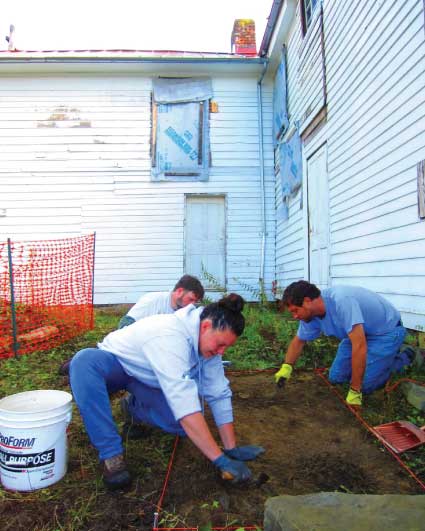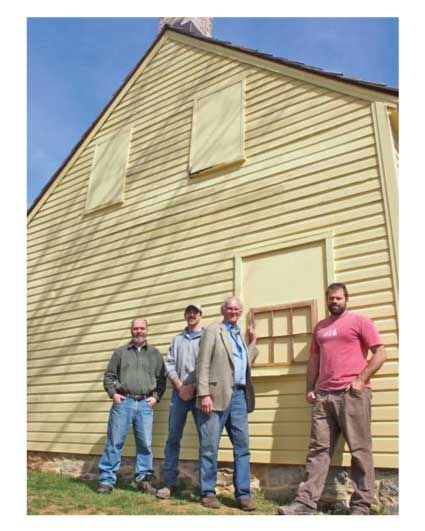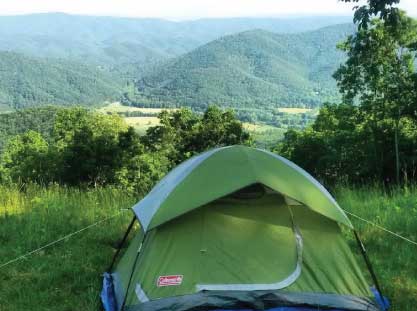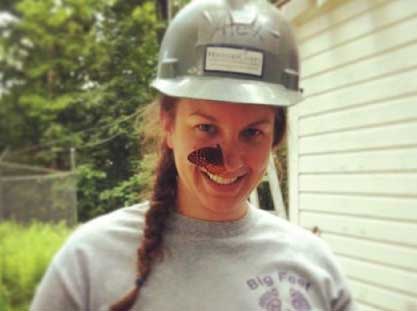|
Charles B. Yuill presents “Integrating Airborne and Terrestrial Laser Scanning with GPS for Heritage Site and Structure Documentation, Management and Monitoring in West Virginia’s Industrial Landscape”
On Friday, September 26, 2014, 3:15-4:40 pm in the Visual Arts Building Charles Yuill works with landscape architecture and environmental design at the Davis College at West Virginia University. His presentation, designed with colleagues Peter Butler and Adam Rielly, focuses on the use of terrestrial laser scanning for heritage and cultural resources. He will delve into case studies including Fallingwater, Arthurdale, the Virginia Iron Furnace, and Blennerhasset Island that have used airborne and terrestrial laser scanning with GPS within these sites. In his presentation, Yuill will focus on the application of drone use to historic structures and landscapes of West Virginia. Don’t miss it! Register for the conference at our EventBrite page. The activity has been financed in part with Federal funds from the National Park Service, Department of the Interior and the WV Division of Culture & History, State Historic Preservation Office. Regulations of the U.S. Department of the Interior strictly prohibit unlawful discrimination in departmental Federally Assisted Programs on the basis of race, color, national origin, age or handicap. Any person who believes he or she has been discriminated against in any program, activity, or facility operated by a recipient of Federal assistance should write to: Office of Equal Opportunity, National Park Service, 1849 C Street, NW, Washington, DC 20240. ARCHEOLOGY TOURISM: HOW CAN ARCHEOLOGY ATTRACT VISITORS TO YOUR SITE? – CONFERENCE INSIDER LOOK7/16/2014
By Rodney, Preserve WV AmeriCorps Today’s Insider Look into the PAWV 2014 Historic Preservation Conference is about using archeology to bring tourists to your site. The conference is given every two years at a different host city. This year it is being held in Huntington, WV, September 25-27, 2014. For a full conference agenda, click HERE. To register for the conference, visit our EventBrite page. Alison Thornton, M.A. Beverly Heritage Center & Appalachian Forest Heritage Area AmeriCorps presents “Using Archeology to Promote Heritage Tourism” Saturday, September 27, 2014 9:00 am – 10:15 am Visual Arts Center, Marshall University Archaeology can be used to bring locals and tourists to your site. Work on mitigation or educational excavations are both types of archaeology which can bring interested parties and perhaps a whole new group of enthusiasts to you. This year, the West Virginia Statewide Historic Preservation Conference will focus on archeology and brownfields re-use. To this end, we welcome Alison Thornton M.A., who will educate attendees on using archeology as a powerful tool to increase involvement within organizations or historic sites.
Ms. Thornton M.A. has a wealth of academic and field archeology experience. Alison Thornton has a Bachelor’s degree in archaeology from Arizona State University and a Master’s degree from Western Michigan University. Recently, she brought her skills to serve the Beverly Heritage Center in Beverly, West Virginia through the Appalachian Forest Heritage Area’s AmeriCorps program. There, one of her projects involved leading an educational excavation at the Collett House.
The activity has been financed in part with Federal funds from the National Park Service, Department of the Interior and the WV Division of Culture & History, State Historic Preservation Office. Regulations of the U.S. Department of the Interior strictly prohibit unlawful discrimination in departmental Federally Assisted Programs on the basis of race, color, national origin, age or handicap. Any person who believes he or she has been discriminated against in any program, activity, or facility operated by a recipient of Federal assistance should write to: Office of Equal Opportunity, National Park Service, 1849 C Street, NW, Washington, DC 20240. PAWV’s 2014 Historic Preservation Conference is coming up in a few months. Our conference is held every two years and features a different city and theme each year. This year’s city is Huntington, and the theme demonstrates how archaeology and brownfield re-use intersect with historic preservation. We’re featuring special insider blogs into some of the conference sessions. The conference is being held in Huntington, WV, September 25-27, 2014. A full conference schedule is available HERE. You can register for the conference at our EventBrite page. Register today! You won’t want to miss this conference.
According to the American Community Survey, 58,106 units, or 1/14 of the homes, in West Virginia fall are vacant, abandoned and/or dilapidated. Many of these buildings are either historic or lie within historic neighborhoods. In addition, some of these properties can be classified as brownfields.
Local governments in West Virginia are primarily responsible for determining how to deal with these issues and prioritizing which properties to address. Mr. Richardson’s presentation will describes the tools that local governments can use to effectively preserve historic properties that are vacant, abandoned, dilapidated and/or brownfields. Richardson’s presentation will discuss how citizens can engage with the local government to promote preservation of historic properties. This discussion will include regulation of unsafe and unsanitary buildings, registration programs, and land banks, all of which are authorized and presently used in West Virginia. The presentation will also provide examples of tools used in other states but not presently in use in West Virginia.
In the case with Abatron products, the consolidant (LiquidWood) is a two part viscous material that when mixed in equal parts and applied to rotted and decaying wood, reinforces, rebuilds, and waterproofs the offending material. It is the first step in the restoration process and is applied before the wood filler. Once the consolidant becomes tacky, the wood filler can be applied.
The filler (WoodEpox) is also a two part system but comes in a two color dough form. The dough is a high-strength, no-shrink structural adhesive putty. Once again, equal parts are mixed to form a uniform substance that can be used to fill even large holes, cracks, and rotted areas. To smooth the dough, one only need dip the putty knife in some isopropyl alcohol and carefully work the material. Once the dough has set, it can be sanded, shaped, and routed. It can also be tinted with dry pigments when combining the two parts, and stained, or primed and painted afterward. It is important to remember two things; the consolidant goes a long way, so only mix a small amount at a time. In addition, the working time for the wood dough is only about twenty minutes, so only mix up an amount that can be worked in that timeframe to avoid waste. It is also important to remember that since the WoodEpox generates heat as it cures, the larger the mass, the quicker it cures due to the amount of heat generated and trapped within the mass. Thus, thin applications will take longer to cure. When used correctly, wood consolidants and filler can produce a very professional end result. In addition, these products allow the homeowner greater autonomy in the hands-on restoration process. It is true that certain situations will require wood replacement, but the Abatron process allows for many jobs that might otherwise be sent out to be completed on site and at a greatly reduced cost. Visit the Abatron website at Abatron.com. Give it a try and good luck! If you would like to learn more about historic wooden window rehabilitation, contact Lynn at lstasick@gmail.com to set up a workshop. You can also visit our website for more information on why to save historic windows.
The historic Entler-Weltzheimer House is believed to be the oldest log structure in Shepherdstown. Built in the 1790s, the structure is the last remaining example of vernacular architecture in that part of Shepherdstown. The university obtained the house in 1926, converting it to a sorority house and domestic science classroom.
The follow-up workshop will be held due in part to the remaining funding which the Historic Preservation and Public History Program received from the Two Rivers Giving Circle and a matching grant from the Historic Shepherdstown Commission. Preservation Alliance of West Virginia is having its 2014 Statewide Historic Preservation Conference in Huntington, WV, 09/25/2014 – 09/27/2014. The 2014 West Virginia Historic Preservation Awards Banquet will occur Friday evening of the conference.
This year’s theme is “From the Ground Up” with the goal of showcasing how archaeology and brownfield re-use intersect increasingly with historic preservation projects. The 2014 Conference Agenda is available in PDF form. There are a few additions to be made over the coming weeks, and updates will be announced on our blog and website, www.pawv.org. The most recent agenda was updated June 17, 2014. Look for special features on different sessions and activities HERE. For questions, email info@pawv.org or call 304 – 345 -6005. REGISTER for the conference at the EventBrite page. You can also REGISTER for the Banquet at the EventBrite page too. You don’t have to attend the entire conference to go to the banquet. To get $15 off the registration fee, become a member of PAWV today! When you join, we’ll send you a special discount code for registration. The activity has been financed in part with Federal funds from the National Park Service, Department of the Interior and the WV Division of Culture & History, State Historic Preservation Office. Regulations of the U.S. Department of the Interior strictly prohibit unlawful discrimination in departmental Federally Assisted Programs on the basis of race, color, national origin, age or handicap. Any person who believes he or she has been discriminated against in any program, activity, or facility operated by a recipient of Federal assistance should write to: Office of Equal Opportunity, National Park Service, 1849 C Street, NW, Washington, DC 20240. By Danielle
PAWV’s 2014 Historic Preservation Conference, From the Ground Up, is scheduled for 9/25/2014 – 9/27/2014. We are really excited to be back in Huntington this year for the conference. We have not had a major event there since 2009. We are also thrilled to be having Friday and Saturday’s educational sessions in Marshall University’s new Visual Arts Center. It’s not every conference that we have the opportunity to be in a newly preserved historical building, and by new we mean that it is opening this summer! We are going out of our way this year to ensure that our conference participants are not stuck in a conference center the entire weekend. We want you to see and experience Huntington’s historic preservation scene. Why are we so excited about this facility? For starters, it’s a state-of-the-art facility in downtown. It’s within walking distance of hotels and all the conference sites. So no worrying about parking in downtown! We’ll be experiencing the “walkability” of downtown Huntington. Additionally, this project paints a picture of old meets new: The site of the VAC, once the historic Anderson-Newcomb Co. building, was built in 1902 — the same year Marshall began its visual arts program. The $13 million transformation to remarkable, world-class visual arts facility incorporates the building’s original hardwood floors with 65,000 pounds of new steel, smart lighting, highly-efficient heating and cooling and Wi-Fi throughout. Lined with spectacular glass, the street-view of the 66,000-square-foot building is directly adjacent to Huntington’s Pullman Square. The ground floor features retail space and a 2,200-square-foot gallery with upwards of 150 feet of linear display space. We are also very excited because during our plenary session on Friday afternoon, we will have Ed Tucker, the architect for this project, give us an in-depth look into the planning, funding, challenges, and work that made this a reality. So mark your calendars for 9/25/2014 – 9/27/2014! You’re not going to want to miss this conference! Look for more blog posts about what to expect for the conference. Full registration information is coming soon. And one more thing – become a member of PAWV, and you’ll benefit from a $15 discount from the conference pricing! Membership donations are tax-deductible on your federal taxes, and through your membership, you’ll receive our biannual printed newsletter. Join today, and you’ll receive the up-coming newsletter with conference brochure in the mail this July 2014. The activity has been financed in part with Federal funds from the National Park Service, Department of the Interior and the WV Division of Culture & History, State Historic Preservation Office. Regulations of the U.S. Department of the Interior strictly prohibit unlawful discrimination in departmental Federally Assisted Programs on the basis of race, color, national origin, age or handicap. Any person who believes he or she has been discriminated against in any program, activity, or facility operated by a recipient of Federal assistance should write to: Office of Equal Opportunity, National Park Service, 1849 C Street, NW, Washington, DC 20240.
HistoriCorps is a national initiative engaging volunteer workforces in historic preservation projects on public and publicly accessible lands. HistoriCorps is based in the Rocky Mountain region and from there is able to coordinate and instruct projects throughout the United States. Volunteers and students work with trades specialists including logworkers, masons, window restorers, roofers, and solar energy technicians to preserve historic resources on and near public lands. We optimize teaching and learning opportunities for volunteer work crews. Over the course of a weekend, week or summer volunteers have the opportunity to gain many valuable trades skills that they can apply to their personal and professional lives.
There is no fee to participate in a HistoriCorps project. However, travel to a project is the responsibility of the volunteer. PAWV sponsored all the travel for the 3 AmeriCorps participants. We rely on memberships and donations to pay for these travel costs. If you are interested in donating to PAWV, you can do so HERE through our PayPal page. All members in the Preserve WV AmeriCorps program benefit from intensive training. It is an important part of our program and all AmeriCorps programs. All members are trained at the beginning of the service year in historic preservation, heritage tourism, economic development, and more. Throughout the remainder of the year, members are given other opportunities for training, whether that be attending the WV Association of Museums conference or the National Main Street Center conference. Recently, one of our members, Eliza, received a scholarship to attend an Oral History Summer School in Hudson, NY. Read all about her experiences on her Tumblr, HERE.
The Preserve WV AmeriCorps program is a service initiative created by the Preservation Alliance of WV. The goals of this program are to build capacity of nonprofit organizations and to improve historical resources all over the great state of WV. It is made possible through formula grant funding from the Corporation for National & Community Service and Volunteer WV. This funding allows PAWV to train and provide a modest living allowance to all of our members. There is little funding for administrative overhead, although this program has become an important part of our mission. We rely on donations from our members and readers to make these programs possible. If you are interested in donating to PAWV, please visit our PayPal page. Every little bit counts! In historic homes, there are many concerns over hazardous materials such as mold, lead paint, and asbestos.
There are other forms of hazardous household waste that are found in homes (historic or not). Keep an eye out for these hazardous materials, especially in homes with babies or small children. |
News and NotesCategories
All
Archives
January 2024
Subscribe to our mailing list to receive e-news updates on historic preservation news and events in West Virginia.
|
Get Involved |
Programs |
Contact UsPreservation Alliance of West Virginia
421 Davis Avenue, #4 | Elkins, WV 26241 Email: info@pawv.org Phone: 304-345-6005 |
Organizational Partners:
© COPYRIGHT 2022 - PRESERVATION ALLIANCE OF WEST VIRGINIA. ALL RIGHTS RESERVED.










 RSS Feed
RSS Feed



